Selby Gardens stages an explosion of dots and flowers for Kusama-O’Keeffe exhibit
Visitors to Selby Gardens have a chance to peer into different views of the world and nature in the exhibition “Yayoi Kusama: A Letter to Georgia O’Keeffe.”
In the glass house conservatory, there are small portholes through which a guest can get a slightly warped view of orchids and other flowering plants. There are glass globes nearby where plants and an occasional fish might pop up. An arrangement of tall, thin cacti pop up out of the koi pond, and everywhere you turn there are planters filled with a reflective dark water that reveal a variety of plants around the grounds.
The two artists, whose work was on the Selby wish list for some time for inclusion in the Jean and Alfred Goldstein Exhibition Series, seem to have little connection artistically. The American O’Keeffe is known for her images of flowers and the dry Southwest. The Japanese-born Kusama, who is still working at 94, is best known for her wildly colorful displays, sometimes immersive, of unusual shapes covered in polka dots of varying size.
Selby President and CEO Jennifer Rominiecki describes Kusama as “arguably the foremost contemporary artist working in the world today,” but added that art lovers might not have discovered her in quite the same way if it weren’t for the encouragement she received decades ago from O’Keeffe.
Kusama wrote a letter to O’Keeffe in 1955 asking for advice on how to advance her career. A blown-up version of that letter is displayed in the Selby Museum of Botany and the Arts. In her book “Infinity Net,” Kusama wrote: “Of all the many remarkable people I have known in my life, the first I must mention is Georgia O’Keeffe. If she had not so kindly answered my clumsy and reckless letter to her, I am not sure I would ever have made it to America. She was my first and greatest benefactor.”
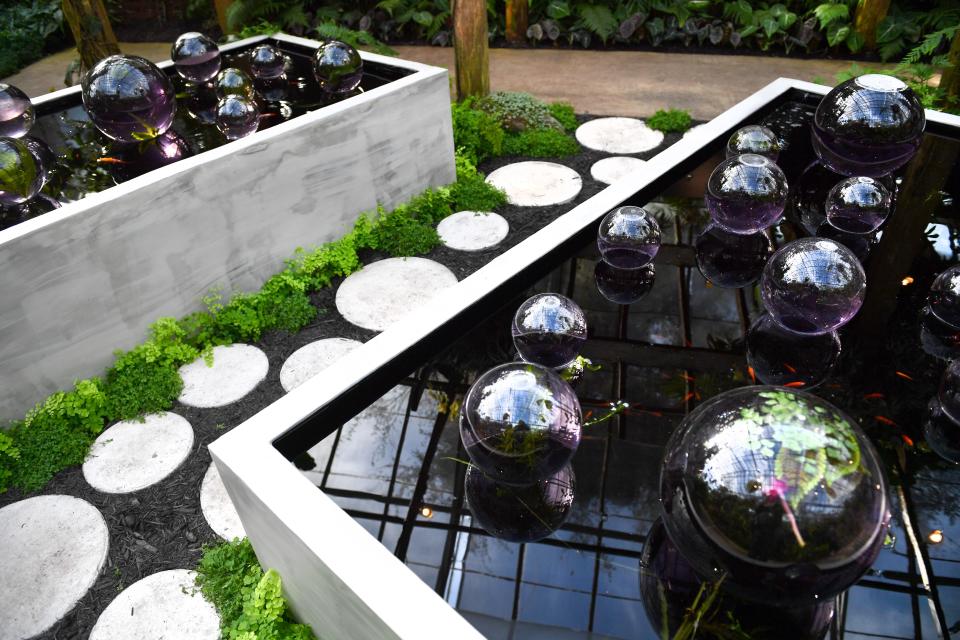
Kusama also wrote about a day in 1961 when “an elderly woman came to call me at my studio” in New York. It was O’Keeffe checking up on Kusama. “Face to face with the legendary artist whose painting of cow bones I had discovered in a secondhand bookshop in provincial Japan. I wondered if I was dreaming.”
That connection is “the heart of the way we laid out interpreting” their work both in the museum and in a series of horticultural vignettes set up around the Selby campus, said David Berry, vice president for visitor engagement and chief museum curator.
Each year, the horticultural staff look to the artists’ work to create their own variations without trying to copy them.
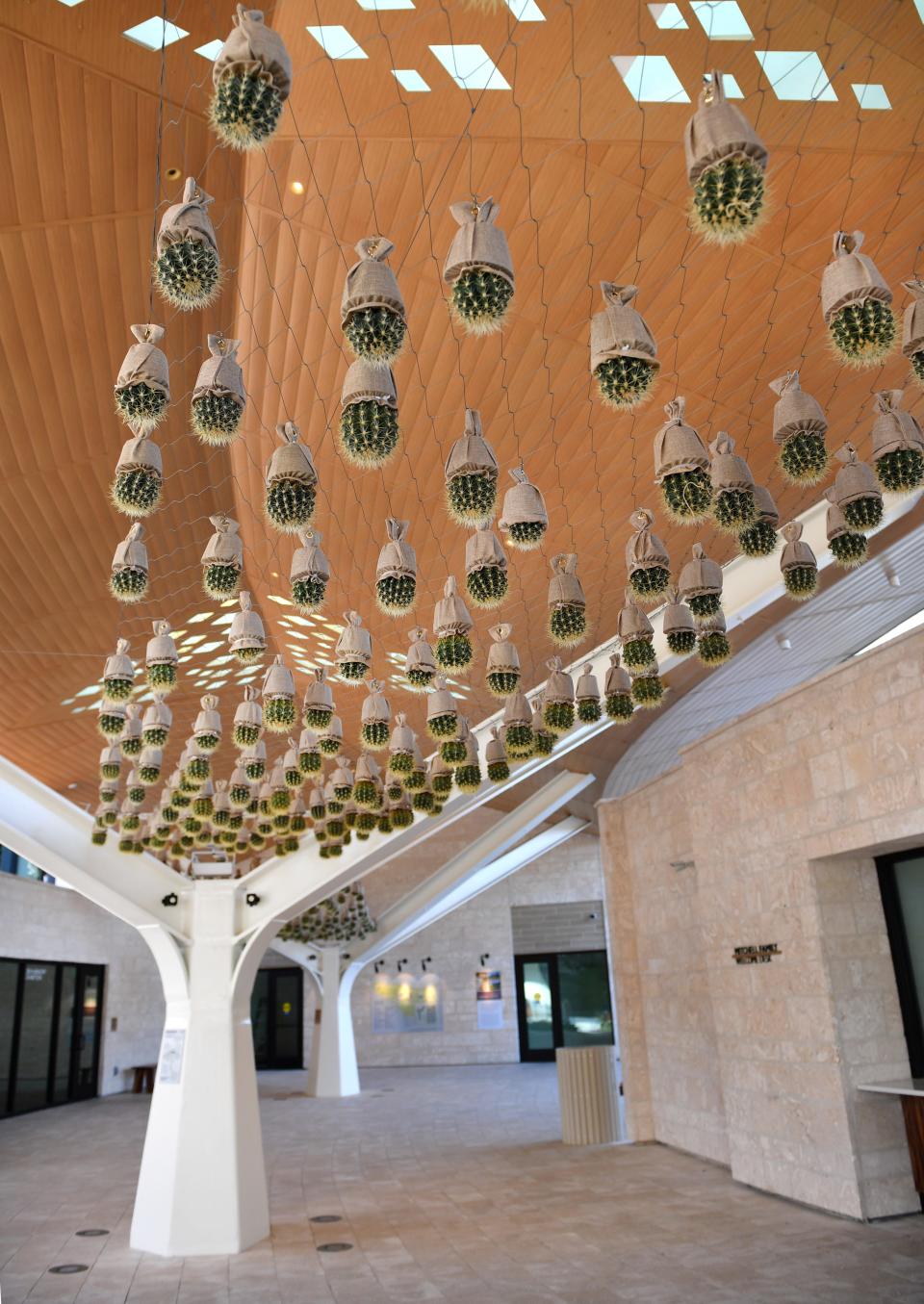
That’s why you won’t see actual polka dots in the displays, but there are plenty of circles and other arrangements that suggest them, said Mike McLaughlin, senior vice president for horticulture. For example, the opening display “Dot Matrix” hangs over the new welcome/visitor center, seeming to combine the style of both artists. Hundreds of cacti are suspended upside down from a wire mesh netting meant to represent infinity. The cacti represent O’Keeffe, and the shadows that hit the ground under the right light conditions, hint at the dots found in Kusama’s work, said Nathan Burnaman, associate director of horticultural exhibits
The reference to infinity ties into the major Kusama art work hanging in the museum, the four-panel “Infinity Dots,” on loan from collector Keith Monda, who has promised it to the Ringling Museum, where it was previously displayed. The museum display features one other black and white Kusama piece, a few small images by O’Keeffe and some reproductions of her flower paintings.
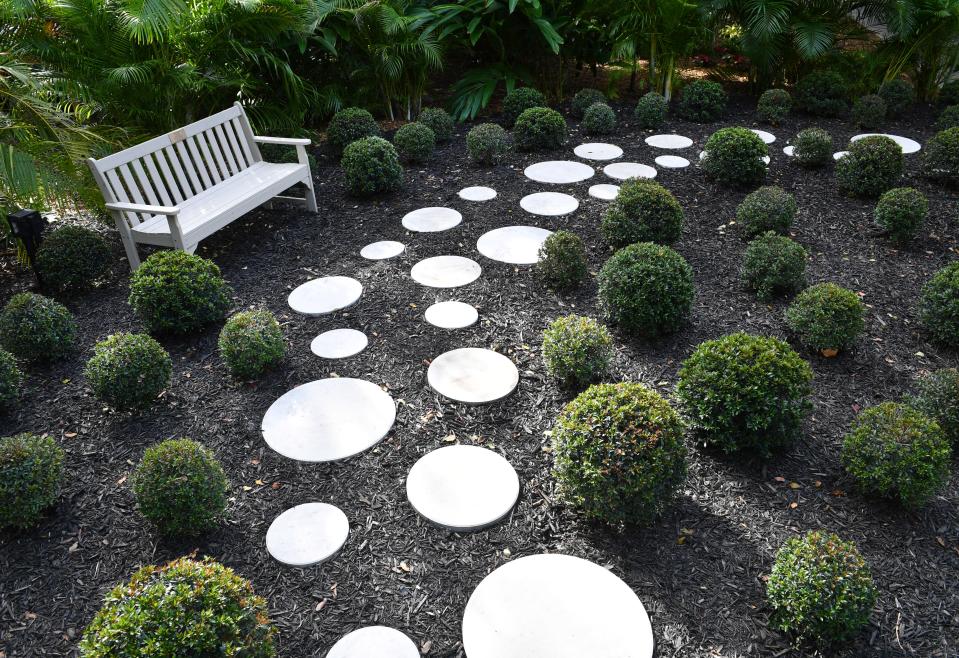
Walking along the winding path past the children’s rainforest garden, visitors will pass through a Tillandsia Tunnel, filled with nearly 1,000 bromeliads, a reflection of a wall of bromeliads that burst inside the conservatory building.
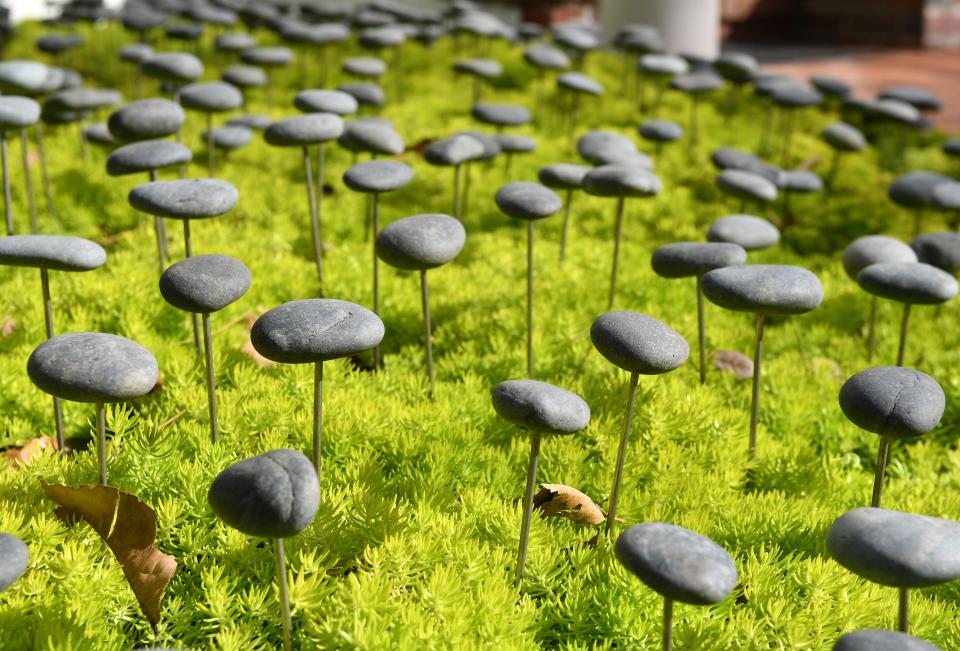
At the southern end of the campus, you can rest by the water and sit on a bench look at the round red planters that pop up around the shell floor. Farther along the path, you can see “Shear Repetition” featuring an arrangement of about 100 topiaries and a ring of round pavers set against black mulch. There is a fence-like maze along the water decorated with plants, and just outside the museum entrance, the staff has created “Moments of Levity,” a display that mixes greenery and river rocks that echo the Kusama painting inside with its thousands of greenish-yellow dots.
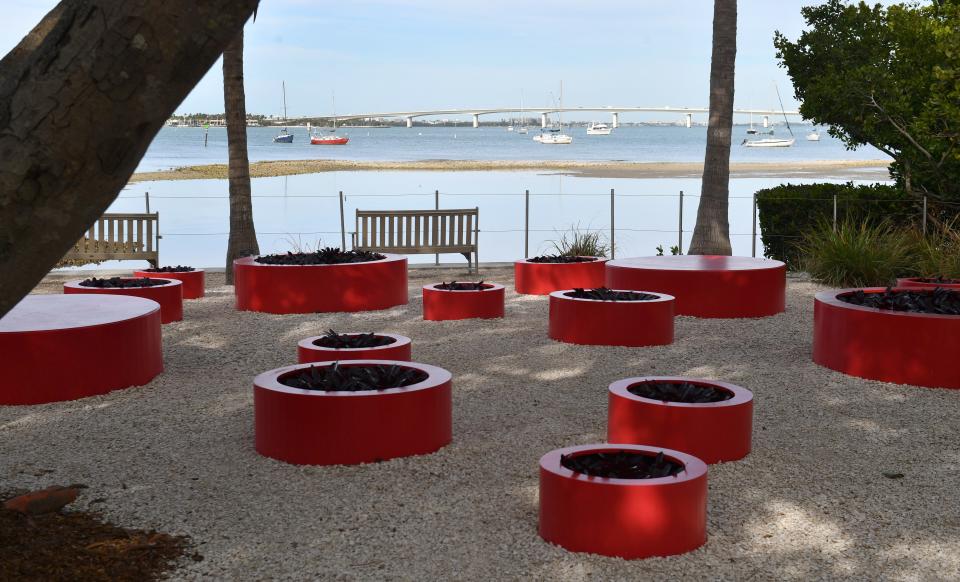
Arts Newsletter: Sign up to receive the latest news on the Sarasota area arts scene every Monday
Photo Gallery: Selby Botanical Gardens opens new exhibition - Yayoi Kusama: A Letter to Georgia O'Keefe
Rominiecki said each year’s exhibition is designed to “examine major artists through the lens of their connection to nature through our unique position as a botanical garden.”
Berry said he hopes the exhibit reveals “the impact of nature on both artists” and artistic ties between them that might not have been readily evident. O’Keeffe was fascinated with Japanese art and she had developed an “interest in pattern and repetition” that she discovered in nature through her family’s nursery business, he said.
Burnaman said the horticulture team began developing ideas for the show months before the fall opening of the new welcome center and adjoining buildings that mark the first phase of a major renovation of the Selby campus.
‘Yayoi Kusama: A Letter to Georgia O’Keeffe’
Selby Gardens Goldstein Exhibition Series. Continues through June 30, Selby Botanical Gardens, 1534 Mound St., Sarasota. 944-361-5731; selby.org
This article originally appeared on Sarasota Herald-Tribune: Art and nature come together in new Selby Gardens exhibition